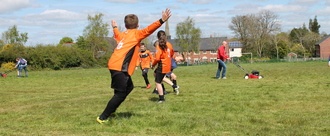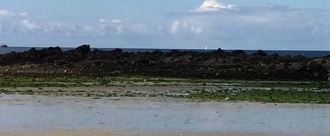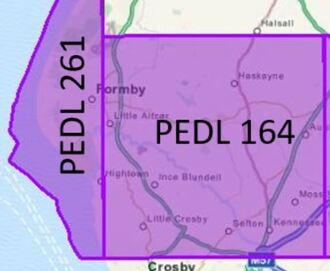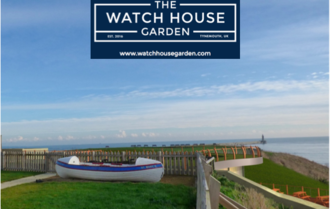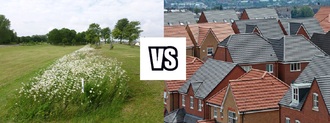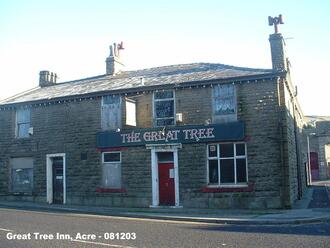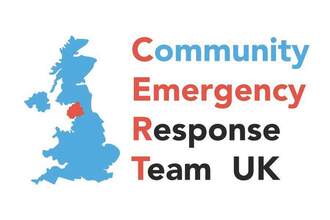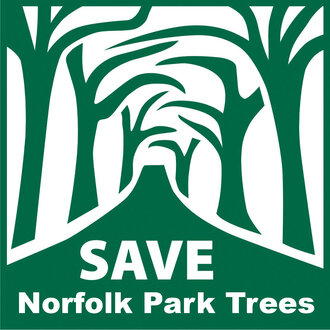-
Standish Recreation GroundWe have too many cars coming into Standish already and we have precious little green space left. The last thing we need is to turn part of our historic recreation ground into a car park. It will mean hundreds of more cars passing one of our primary schools each day. This will cause pollution and shorten the lives of our children. It will destroy a quiet area of Standish and ruin the lives of those living nearby.306 of 400 SignaturesCreated by Jim Meehan
-
A428 Black Cat to Caxton Gibbet by-passHighways (England) are proposing to re-route this part of the A428 through the beautiful Cambridgeshire countryside. As justification they say traffic will be speeded up by a few minutes at peak times. But building new roads just makes room for even more traffic. The only result is a continuous and permanent loss of England’s green and pleasant land. Please sign this petition and pass it on to your friends. And, more importantly, submit your objection to Highways public consultation. A sample objection is given below The consultation period ends on April 23rd. So this is urgent. Email your objection to [email protected] giving your full name and postal address. Sample Objection A428 Black Cat to Caxton Gibbet proposal The proposed by-pass road is un-necessary. Improvements to the Black Cat roundabout (proposed in the Plan) and to the Caxton Gibbet roundabout (not included in the Plan) will speed up the travel time to a degree which makes a new road un-necessary. The argument for the new road is basically an economic one that eventually it will increase the UK gross domestic project (GDP). However the GDP per capita has remained fundamentally unchanged over the last 15 years despite the building of new roads and the widening of many others. Thus there is likely to be no economic gain. The loss of Cambridgeshire countryside will be permanent. It is just one further example of the constant erosion of our countryside heritage which is occurring throughout England. The value of this loss has not been weighed against any real economic gain or indeed against the perceived gains as seen by the proposers of this Plan Should Highways reject these arguments the Orange route is to be preferred.201 of 300 SignaturesCreated by Reginald Norgan
-
Protect Climate Change, Environment, Wildlife and Animal Welfare laws and commitments in the UKClimate change and the damage being done to our planet and the natural world should be the number one priority for all of us. We need to work together worldwide to prevent further harm and reverse the damage already done. Many environmental targets have been put at risk by the current position of the US government. It is imperative that the UK government remains committed to these aims and to continuing to work with our friends in Europe and like minded nations and organisations worldwide. Studies and polling also show this is an important factor to millions of eligible UK voters. Protect our planet for all our children.126 of 200 SignaturesCreated by Angela Marston
-
Open letter & petition to local landownersOPEN LETTER TO LANDOWNERS In June/July 2016 a company known as Tesla Exploration International Limited carried out a 3D seismic survey on behalf of Aurora Energy Resources Limited, the holders of PEDLs (Petroleum Exploration and Development Licences) 164 and 261. The areas covered by these PEDLs are shown on the attached official maps issued by the Oil & Gas Authority, from which it will be noted that bordering on PEDL 164 is PEDL 262, also licensed to Aurora and PEDL 165 licensed to Cuadrilla. On their website, Aurora state: “The North West has a long history of oil & gas exploration and production stretching back over 70 years. Many local residents will remember the oil wells near Formby. The recent recognition by the British Geological Survey of the potential for significant gas resources in northern England provides an opportunity to open a new chapter in the hydrocarbon story of the region.” and on their old website they said: “The company’s largely contiguous, 100% licence holding, puts Aurora in a strong position to play a leading role in the further appraisal of what is widely expected to be Europe's first commercially developed shale gas province.” In response to our enquiries Aurora’s MD Ian Roche has now advised: “As previously indicated, Aurora expect to bring forward proposals for future exploration at some point in 2017. Prior to any planning application being submitted, we will hold a public information event about the proposed development, the feedback from which will inform our application.” Therefore, their intention is clear that they plan to submit planning application(s) soon for exploratory drilling for shale gas (“fracking”) within their PEDLs. Once land has been acquired, UK law allows drilling to take place without requiring the landowner’s consent. The Infrastructure Act 2015 removed the requirement for companies to obtain your permission to drill under your land/property at depths of 300 metres or more from the surface. In addition, mineral rights do not belong to landowners in UK, they belong to the State. You will have seen in the press the events that are unfolding on the Fylde where Cuadrilla, holders of PEDL 165 (a much larger area directly to the north of PEDL 164). Despite legal challenges by the community against the Secretary of State’s decision to allow their appeal, Cuadrilla is continuing to construct a well-pad. There is growing evidence and information available about the consequences for communities subjected to fracking in the USA and Australia and other countries. We have attached a list of internet links to news articles and peer-reviewed studies for your attention. You may also wish to read this article from the Guardian relating to a farmer in Shropshire: https://www.theguardian.com/environment/2015/jul/17/dont-allow-fracking-farmer-allowed-coal-methane-borehole You will note that Mr Hickson bitterly regrets signing an agreement to allow exploratory drilling on his land: “I very much regret signing anything. I would never ever go into this kind of agreement again. As a farmer or landowner, you have the most to lose. I would say to anyone approached, please don’t let anyone drill on your land [to extract coal bed methane and gas by fracking shale].” Before a planning application can be submitted, it will be necessary for Aurora (or any company that acquires Aurora’s interest in these PEDLs) to lease or buy land for their exploration. It is for this reason that we send this letter to you signed by groups of people who have done their own research and as a result of which they are totally opposed to fracking taking place anywhere, not just in Lancashire/Merseyside. We ask for your kind consideration of this letter should you be approached by Aurora, or any company on their behalf, to acquire or lease your land. Signed: Halsall Against Fracking Frack Free Formby Frack Free Burscough Frack Free Southport Frack Free Lancashire393 of 400 SignaturesCreated by Simon Maxwell
-
Stop Tetrosyl Storing Hazardous Chemicals in Castleton RochdaleTetrosyl, the largest producer and supplier of car care products in Europe and the largest independent oil blender in Europe is potentially endangering the life of Castleton residents by applying for Hazardous Substance Consent to store its products on its site as close as 270 cm to the nearest houses in the village (population 11,000*). Tetrosyl intends to store thousands of tonnes of hazardous products containing toxic chemical/gases some of which are flammable and/or highly explosive on their Royle Barn Road site. Their list includes include aerosols containing household and car maintenance products (2,000 tonnes); peroxide hardeners (150 tonnes); household, car cleaning and maintenance products (6,000 tonnes) and oils, fragrances and maintenance sprays (1,500 tonnes ) . This equates to 1.14 tonnes per resident at any given time. Castleton residents have good reasons to be frightened . Tetrosyl is located on the former Woolworths NW Distribution site, which was decimated by fire in 1971. Prior to this, in 1960, the ‘fireproof’ Dunlop mill in Castleton was engulfed by fire, tragically claiming the life of employee Charles Watson and injuring others. Only four months ago there was a huge blaze at the former Castleton Carcraft site . The Tetrosyl site is surrounded by a primarily residential area with houses, schools, leisure facilities, local businesses, shops, railway station (next to the site) and the canal (Site of Specific Scientific Interest and Special Conservation Area). It is directly opposite an electrical substation, and adjacent to the Soccer Factory, well-attended by school children with over 100 attending the facility at weekends. Hazardous chemicals like these, and in these quantities, should not be stored near a densely-populated residential area. As one resident said ‘Whilst we want to see new businesses bringing jobs to Castleton, not at any price, and the danger these chemicals pose is a price too high‘. Please support Castleton residents opposed to the granting of consent for Tetrosyl to store Hazardous Substances in the heart of their village. (*source 2011 census)161 of 200 SignaturesCreated by A Simpson
-
Don’t use palm oil in banknotesThe Bank of England is weighing up whether to use palm oil or coconut oil in their new banknotes. Palm oil plantations are currently a leading cause of rainforest destruction, destroying the homes of endangered Orangutans who are treated like pests and killed to aid the palm oil industry. The Bank of England faces a simple decision, to use destructive palm oil, or opt for a more sustainable alternative such as coconut oil. This decision could have a ripple effect in other countries too as they follow suit and produce new types of bank notes.42,267 of 45,000 SignaturesCreated by Atul S
-
SUPPORT Plans to Build Tynemouth Watch House Garden CYCLE HUBThe CYCLE HUB will compliment our beautiful coastline whilst providing a 'stand-out' attraction for the many cyclists, tourists and general public whom already frequent the Spanish Battery. The development will assist with the enhancement and preservation of the Tynemouth conservation area and local heritage for generations to come. North Tyneside attracts approximately 5.8 million visitors each year who inject £279 Million into the local economy, supporting over 3500 jobs. This proposal will open a disused private garden into a considerate, visually low-impact CYCLE HUB that will only be visible from the southern aspect on the River Tyne. From the outset the building has been sensitively designed to ensure the iconic views to and from the Brigade Watch House remain unspoilt. The building will be sunk beneath a manicured lawn at the same level as the current garden. We have even gone as far as to store refuse bins below ground level. Two large car parks already exist to provide customers with parking. Additional spaces will be allocated for the sole use of the Tynemouth Volunteer Life Brigades response vehicles, whilst residents parking will remain untouched. Those living on the Battery will be un-effected by the building as the aim is to cater for passing trade that already exists. The vast majority of our intended customers will arrive by foot or cycle. Our vision is to provide Tynemouth with a gateway amenity that links to the National Cycle Network and provides a valuable facility for Tynemouth residents and the wider general public. The development will ensure a notable finishing point for those tackling the challenge of the Coast to Coast/Coast to Castles/Great North Bike Rides. In essence the Cycle Hub will establish Tynemouth as a key destination within the cycling community. A multitude of independent reporting commissioned by UK GOV indicates that development and investment in cycling infrastructure and sustainable transport provides the following: • Creates inward investment to an area. • Brings more jobs and positively effects the labour market, contractors and wider infrastructure/services. • Increases health of those in the area, with exercise in excess of Chief Medical Officers guidelines. • Boosts the local economy and business • Creates a modal shift in the well being of individuals. • Increases social inclusion and connectivity. • Makes better cities and neighbourhoods. • A reduction in Crime Rate. • An increase in rental and property prices. • Eases congestion. • Improves air quality. The North East of England is renowned for its warmth and hospitality, we look forward to providing a facility that welcomes one and all.1,803 of 2,000 SignaturesCreated by Gareth Reece
-
Save Hengrove Park from housing developmentHengrove Park is the largest open recreational space in South Bristol, and an important resource used by the local community for sports and leisure activities. But Bristol Council wants to drastically reduce it in size by concreting over the majority it for housing - which will result in part of this precious resource being lost forever. The park is currently 76 hectares in size, but the proposed development of around 1700 houses would build on 45 hectares of it - reducing it in size by more than half. The green space left will be considerably smaller and fragmented, and a shadow of the current amenity. Parks must be protected for communities and future generations, and the Council needs to understand how passionately people feel about public assets being sacrificed for development. Local councillors recently blocked a move to build this increased number of houses, and the council's proposal is being referred to a special meeting on Monday March 27th 4pm at the Council House, College Green, Bristol, which could overturn their attempts to block the expanded development. They urgently need our support.438 of 500 SignaturesCreated by Damon Jones
-
Give York Back to the PedestriansYork is a medieval city with narrow streets, ancient buildings and lots of tourists. Moving around parts of the city during the day can be difficult and dangerous, especially for those with limited mobility. There is constant traffic in parts of the city where there need not be, car users taking advantage of their privilege with no thought to the safety or rights of others. I believe that removing cars from York city centre would be beneficial to tourism, as it would make moving around the city easier. Additionally, heavy goods vehicles have done damage to a number of ancient buildings on Stonegate and Gillygate. Goods vehicles should be restricted to those of an appropriate size for the narrow nature of the streets in the ancient part of the city. The rights of a few car-users are currently trumping the rights of the majority of York residents. Polluting our air, crowding the city and causing danger to residents and tourists alike. Pedestrianisation will encourage the use of public transport and bicycles to access the city, thus improving the air quality in and around York and working towards a more sustainable future. Improving pedestrian and cycle access from residential areas to the city will further improve accessibility for those without the privilege of their own car. There are many ancient cities in Europe that are either partly or fully pedestrianised, without a significant impact on tourism or business. Make York an example to the rest of the United Kingdom for preserving the heritage of our ancient cities.31 of 100 SignaturesCreated by Adam Doxford
-
Save the great tree pub stop the demolition and grant community asset transferTo save and celebrate our local history and heritage. To gain community asset transfer to restore the building to its former glory.123 of 200 SignaturesCreated by Rachel Jones
-
Save CERT (UK) CharityPrior to Storm Desmond I hadn't really comprehended what was involved or what was needed; before, during and after such an event. I thought that within a few months people would be okay, insurance companies, local and national government would step in, support and pick up the pieces. In the real world this isn't really what happens. Now 17 months down the line as an organisation we have over 650 flood affected clients on our books. We have supported over 20,000 homes and businesses throughout the UK with physical, email, social media and verbal support when they have been in crisis, emergency or disaster due to floods and other emergencies. This has accumulated a total of 104,000 volunteer hours over the past 17 months with little to no funds. We are now in a position that we need to find funds to keep going, with the continued ongoing support and needs of those who were flooded, physically, mentally and emotionally many are still suffering greatly. We have run on a shoe-string the past 17 months with only £153,000 in funding and donations spent to date. This only goes to show that we are extremely frugal with all funding and use every penny to it's best advantage. Overheads are as low as we can possibly make these with limited paid staff, relying on volunteers to make the organisation run. It's not "If we flood again, it's WHEN we flood again!"2,884 of 3,000 SignaturesCreated by Kerryanne Wilde
-
Save the Norfolk Park 11Between August 2012 and December 2016 Amey the Council contractor felled over 4200 trees across Sheffield. Now they are planning to chop down 27 of our local street trees. Some of these trees are near the end of their life and should be replaced, many others are mature healthy trees that help to keep the air clean (1), protect our homes from flooding (2) and provide a habitat for local wildlife (3), as well as making our streets nicer and healthier places to live (4). Mature trees are particularly good at filtering out pollution (5), cooling the air in summer (6) and maintaining nature's delicate balance (7). Four of the trees are said to be damaging the pavement and are therefore discriminatory to disabled people and those using pushchairs. We believe the damage is minor and does not impair accessibility for disabled people, or the users of prams and pushchairs. Alternative highway engineering specifications (8), such as use of flexi-pave and/or pavement restructuring near trees, with kerb stones sculpted to accommodate roots, would represent a sustainable solution to the perceived problems. The other trees are said to be diseased or dangerous. Our experts say with sensible management and in some cases some pruning, the following 11 trees will thrive for many years and should be saved. Seabrook Rd/Stafford Road healthy mature sycamore (“damaging”) Tylney Rd healthy mature sycamore at no.7 (“damaging”) 52 Park Spring Drive - mature healthy cherry tree (“disease”) 76 Park Spring Way - mature healthy sycamore (“dangerous”) Opposite Norfolk Community School, Guildford Avenue – 2 mature whitebeam trees. (“dangerous/disease”) Norfolk Park Road 3 Horse Chestnuts grouped together near Sheffield College (“dangerous/disease”) Holdings Road (outside nos.7 and 31) Cherry Trees (“damaging”) The Council carried out a survey of households to see if people wanted to save the trees. This was deeply flawed as many houses and in some cases whole streets were missed out. References (1) Karl, T., Harley, P., Emmons, L., Thornton, B., Guenther, A., Basu, C., & Jardine, K. (2010). Efficient atmospheric cleansing of oxidized organic trace gases by vegetation. Science, 330(6005), 816-819.http://www.sciencemag.org/content/330/6005/816.short Escobedo, F., Kroeger, T. & Wagner, J. (2011). Urban forests and pollution mitigation: analyzing ecosystem services and disservices. Environmental Pollution, Volume 159, pp. 2078-2087.http://scholar.google.co.uk/scholar?cluster=14928633190131047233&hl=en&as_sdt=0,5 (2) Trees and Design Action Group (2012). Trees in the Townscape: A Guide for Decision Makers, s.l.: Trees and Design Action Group.http://www.tdag.org.uk/trees-in-the-townscape.html Construction Industry Research and Information Association, 2013. CIRIA Research Project RP993: Demonstrating the multiple benefits of SuDS – A business case (Phase 2). Draft Literature Review. [Online] Available at: http://www.susdrain.org [Accessed 25 May 2015].http://www.susdrain.org/files/resources/ciria_guidance/ciria_rp993_literature_review_october_2013_.pdf (3) Ewers, R. M., & Didham, R. K. (2006). Confounding factors in the detection of species responses to habitat fragmentation. Biological Reviews, 81(01), p. 117-142. http://scholar.google.co.uk/scholar?cluster=1003233194462145743&hl=en&as_sdt=0,5 Gilbert‐Norton, L., Wilson, R., Stevens, J. R., & Beard, K. H. (2010). A Meta‐Analytic Review of Corridor Effectiveness. Conservation Biology, 24(3), p. 660-668. http://onlinelibrary.wiley.com/doi/10.1111/j.1523-1739.2010.01450.x/full (4)Sarajevs, V. (2011). Health Benefits of Street Trees, Farnham: Forest Research. http://www.forestry.gov.uk/fr/INFD-8JCEJH Williams, K., O'Brien, L. & Stewart, A.. (2013). Urban health and urban forestry: how can forest management agencies help?. Arboricultural Journal: The International Journal of Urban Forestry, Volume 35, pp. 119-133.http://www.tandfonline.com/doi/pdf/10.1080/03071375.2013.852358 (5) Shackell, A. & Walter, R. (2012). Greenspace Design For Health And Well-being, Edinburgh: Forestry Commission.http://www.forestry.gov.uk/PDF/FCPG019.pdf/$FILE/FCPG019.pdf Velarde, M., Fry, G. & Tveit, M. (2007). Health effects of viewing landscapes – Landscape types in environmental psychology. Urban Forestry & Urban Greening, Volume 6, p. 199-212.http://www.sciencedirect.com/science/article/pii/S1618866707000416 (6) Forestry Commission (2011). The UK Forestry Standard: The governments’ approach to sustainable forest management. 3rd ed. Edinburgh: Forestry Commission. http://www.forestry.gov.uk/ukfs (7) Gonzalez, A., Rayfield, B., & Lindo, Z. (2011). The disentangled bank: how loss of habitat fragments and disassembles ecological networks. American Journal of Botany, 98(3), p. 503-516.http://www.amjbot.org/content/98/3/503.full (8) Trees and Design Action Group. (2014) Trees in Hard Landscapes: A Guide for Delivery. TDAG http://www.tdag.org.uk/trees-in-hard-landscapes.html520 of 600 SignaturesCreated by Graham Wroe
Hello! We use cookies to improve your experience by providing insights into how the site is being used. Find out more.
